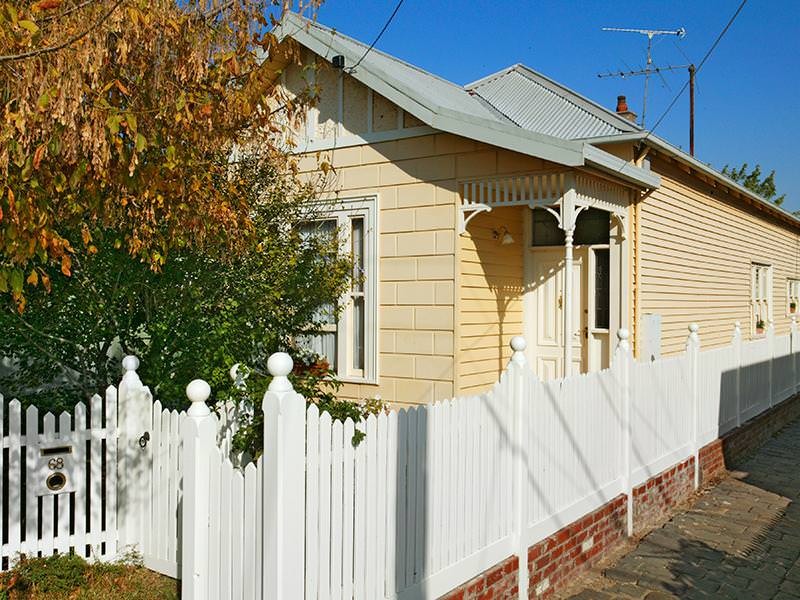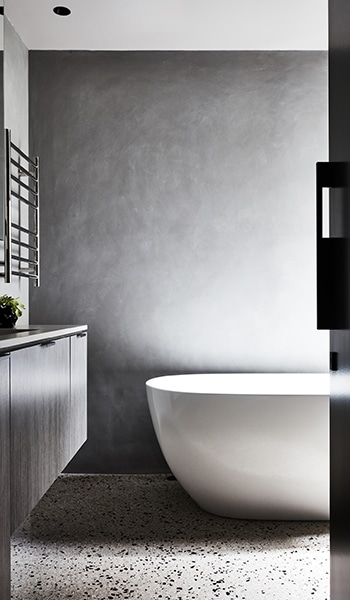Deciding whether to renovate an existing home or build a new one can be a challenging decision. There are various factors to consider, such as planning requirements, budget, personal preferences, and long-term goals.
In this blog post, we will explore the pros and cons of both options to help you make an informed choice.
Planning requirements and overlays
The first step is to consider planning requirements and overlays on your site, as this can severely affect your options.
If there is a heritage overlay, there will be restrictions on how your home must look from the street. As a rough guide we would advise to allow at least six months additional time to the planning process if a heritage overlay is involved.
Other overlays, such as flooding, can impact if and how new structures can be built. For example, areas along the Maribyrnong River and other water courses may have minimum floor level requirements to avoid flood water ingress. These water courses may only carry water on rare occasions, so you may not even be aware your property is regarded as flood effected. While older, established homes often don’t comply with current flood overlays, any new works will be required to. A practical resource for requirements and overlays can be found at https://www.landata.online/
Renovations
Reviving a heritage home to its former glory can be fulfilling and rewarding, particularly if you have an interest in your suburb’s local history. Many period homes have timeless design features, particularly in their façades, and while trends come and go, a professionally restored period home will always have great street appeal.
It’s not uncommon for neighbours or previous owners to express their joy at seeing an old building restored to its former glory. We were recently provided with historic photographs of a Moonee Ponds home we were restoring. A previous owner who happened to be driving past returned to the site with these family photos.



However, renovations also have their downsides. The extent of the works and the existing condition of the home can significantly impact the cost. The layout may require compromises to work with the existing structure. Additionally, certain homes may lend themselves better to extensions than others. The most cost-effective renovation projects typically involve extensions to the rear with minimal changes to the front of the home, whereas extensive renovations throughout the entire home can approach the cost of a new build.
Renovations do have a higher chance of unexpected issues resulting in additional costs. We endeavour to include a suitable allowance for repair works but some issues simply cannot be assessed until demolition has been completed.
Although your builder will complete the new renovation work to a high standard, remnants of the existing structure are retained, and these will normally not be covered by the builder’s warranty.
Another factor to consider with renovating is whether you will stay in your home. For major renovations, you will need to vacate your property to allow for all works to be undertaken efficiently and safely. In most cases, services will need to be disconnected for extended periods, which makes living in the home unworkable.
Knock down rebuild
Perhaps the main benefit to opting for a knockdown rebuild is that you remain in the exact spot where you love to live with the bonus of having a brand-new home fitted with services for today’s lifestyle, and beyond. Once any planning and site restrictions are identified, there is a clean slate to achieve the exact layout and design you wish for.
Knocking down and rebuilding a home offers several advantages. One of the most significant benefits is the freedom to design the layout and features without the limitations imposed by an existing structure. You have the opportunity to create a home that perfectly suits your needs and preferences, within the constraints of planning regulations and the site itself. A new build also comes with a clear builder’s warranty and lower maintenance costs, as everything is brand new.
A new build budget will usually be higher compared to a renovation, but the long-term return on investment will likely be higher. As the entire project will be new works, the builder’s warranty obligations are clearer, and maintenance costs will be lower. The timeframe for a new build will usually be longer than a renovation, but this is not always the case. Higher energy efficiency can be obtained using new design techniques, and innovative materials.
Finally, before you approach a builder or designer about your project, it’s worthwhile having a think about the following points:
– What are the planning restrictions on your site?
– What are the main factors driving you to undertake building works?
– Is adding value to your property the main reason for the work, or is it more lifestyle factors?
– What value will the proposed works add?
– In the case of a renovation, how much work is required in the retained areas?
– How long are you expecting to own the property?
– What is your absolute budget, including a contingency allowance?
Ultimately, the decision to renovate or build a new home depends on your specific circumstances, goals, and preferences. By carefully considering the pros and cons outlined in this blog post and answering the relevant questions, you’ll be better equipped to make the right choice for your situation. Whichever path you choose, with proper planning and the help of professionals, you can create a beautiful and functional home that meets your needs and enhances your lifestyle.
This blog is intended to give a brief overview of the concepts to think about when deciding which direction to take. Please reach out to us if you are interested in chatting further about the points raised here. We primarily focus on mid to architectural level projects in the Moonee Valley area and have developed a track record of delivering quality projects for our clients.



